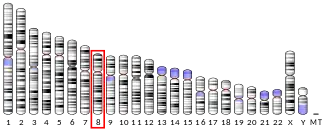| SPAG11B | |||||||||||||||||||||||||||||||||||||||||||||||||||
|---|---|---|---|---|---|---|---|---|---|---|---|---|---|---|---|---|---|---|---|---|---|---|---|---|---|---|---|---|---|---|---|---|---|---|---|---|---|---|---|---|---|---|---|---|---|---|---|---|---|---|---|
| Identifiers | |||||||||||||||||||||||||||||||||||||||||||||||||||
| Aliases | SPAG11B, EDDM2B, EP2, EP2C, EP2D, HE2, HE2C, SPAG11, sperm associated antigen 11B, SPAG11A | ||||||||||||||||||||||||||||||||||||||||||||||||||
| External IDs | OMIM: 606560 MGI: 3647173 HomoloGene: 83383 GeneCards: SPAG11B | ||||||||||||||||||||||||||||||||||||||||||||||||||
| |||||||||||||||||||||||||||||||||||||||||||||||||||
| |||||||||||||||||||||||||||||||||||||||||||||||||||
| |||||||||||||||||||||||||||||||||||||||||||||||||||
| |||||||||||||||||||||||||||||||||||||||||||||||||||
| |||||||||||||||||||||||||||||||||||||||||||||||||||
| Wikidata | |||||||||||||||||||||||||||||||||||||||||||||||||||
| |||||||||||||||||||||||||||||||||||||||||||||||||||
Sperm-associated antigen 11B is a protein that in humans is encoded by the SPAG11B gene.[5][6][7]
Function
This gene encodes several androgen-dependent, epididymis-specific secretory proteins. The specific functions of these proteins have not been determined, but they are thought to be involved in sperm maturation. Some of the isoforms contain regions of similarity to beta-defensins, a family of antimicrobial peptides. The gene is located on chromosome 8p23 near the defensin gene cluster. Alternative splicing of this gene results in seven transcript variants encoding different isoforms. Two different N-terminal and five different C-terminal protein sequences are encoded by the splice variants. Two additional variants have been described, but their full length sequences have not been determined.[7]
References
- 1 2 3 ENSG00000274405, ENSG00000288309 GRCh38: Ensembl release 89: ENSG00000164871, ENSG00000274405, ENSG00000288309 - Ensembl, May 2017
- 1 2 3 GRCm38: Ensembl release 89: ENSMUSG00000059463 - Ensembl, May 2017
- ↑ "Human PubMed Reference:". National Center for Biotechnology Information, U.S. National Library of Medicine.
- ↑ "Mouse PubMed Reference:". National Center for Biotechnology Information, U.S. National Library of Medicine.
- ↑ Osterhoff C, Kirchhoff C, Krull N, Ivell R (March 1994). "Molecular cloning and characterization of a novel human sperm antigen (HE2) specifically expressed in the proximal epididymis". Biology of Reproduction. 50 (3): 516–25. doi:10.1095/biolreprod50.3.516. PMID 8167223.
- ↑ Kirchhoff C, Osterhoff C, Habben I, Ivell R, Kirchloff C (April 1990). "Cloning and analysis of mRNAs expressed specifically in the human epididymis". International Journal of Andrology. 13 (2): 155–67. doi:10.1111/j.1365-2605.1990.tb00972.x. PMID 1693137.
- 1 2 "Entrez Gene: SPAG11 sperm associated antigen 11".
Further reading
- Krull N, Ivell R, Osterhoff C, Kirchhoff C (January 1993). "Region-specific variation of gene expression in the human epididymis as revealed by in situ hybridization with tissue-specific cDNAs". Molecular Reproduction and Development. 34 (1): 16–24. doi:10.1002/mrd.1080340104. PMID 8418812. S2CID 24008790.
- Hamil KG, Sivashanmugam P, Richardson RT, Grossman G, Ruben SM, Mohler JL, Petrusz P, O'Rand MG, French FS, Hall SH (March 2000). "HE2beta and HE2gamma, new members of an epididymis-specific family of androgen-regulated proteins in the human". Endocrinology. 141 (3): 1245–53. doi:10.1210/endo.141.3.7389. PMID 10698202.
- Fröhlich O, Po C, Murphy T, Young LG (2000). "Multiple promoter and splicing mRNA variants of the epididymis-specific gene EP2". Journal of Andrology. 21 (3): 421–30. doi:10.1002/j.1939-4640.2000.tb03397.x. PMID 10819450. S2CID 32923465.
- Fröhlich O, Po C, Young LG (April 2001). "Organization of the human gene encoding the epididymis-specific EP2 protein variants and its relationship to defensin genes". Biology of Reproduction. 64 (4): 1072–9. doi:10.1095/biolreprod64.4.1072. PMID 11259252.
- von Horsten HH, Derr P, Kirchhoff C (September 2002). "Novel antimicrobial peptide of human epididymal duct origin". Biology of Reproduction. 67 (3): 804–13. doi:10.1095/biolreprod.102.004564. PMID 12193388.
- Légaré C, Verville N, Sullivan R (2004). "Vasectomy influences expression of HE1 but not HE2 and HE5 genes in human epididymis". Journal of Andrology. 25 (1): 30–43. doi:10.1002/j.1939-4640.2004.tb02756.x. PMID 14662784.
- Avellar MC, Honda L, Hamil KG, Yenugu S, Grossman G, Petrusz P, French FS, Hall SH (November 2004). "Differential expression and antibacterial activity of epididymis protein 2 isoforms in the male reproductive tract of human and rhesus monkey (Macaca mulatta)". Biology of Reproduction. 71 (5): 1453–60. doi:10.1095/biolreprod.104.031740. PMID 15229135.



